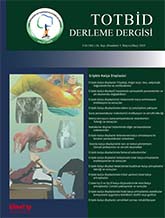
Acetabular dysplasia is one of the leading causes of hip osteoarthritis seen in adolescents and adults. It is a condition generally associated with a shallow acetabulum and associated proximal femoral deformities, leading to progressive hip osteoarthritis due to asymmetric load distribution in the hip joint. The main aim in treating acetabular dysplasia is to achieve an even distribution of weight on the joint. At this stage, periacetabular osteotomies can provide reasonably satisfactory results. To achieve successful results in the treatment of acetabular dysplasia, it is important to select the appropriate patient, decide on the appropriate indication, and perform the pelvic osteotomy appropriately. This review aims to identify the diagnostic features and appropriate indication in the treatment of acetabular dysplasia and describes the most commonly used periacetabular osteotomies, with particular emphasis on the modified Kotz osteotomy which is frequently used in our clinic.